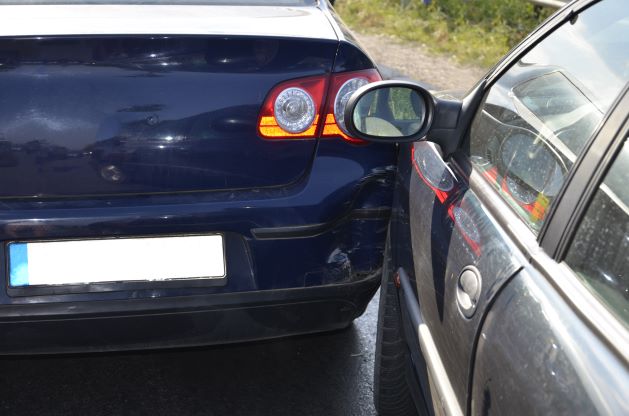Car accidents are an everyday hazard, especially in Texas. In the Lone Star State, a car accident happens every minute and seven seconds. Of those, many are preventable and only happen because of someone else’s carelessness.
If you’ve been in a car accident, you might be entitled to claim compensation for your injuries, including your medical expenses, lost wages, and the pain you’ve suffered. The first step is to determine which type of car accident you’ve been in.
Areas in Greater San Antonio We Serve
Types of Auto Accidents
Most car accidents involve two vehicles, whether a fender bender or a dangerous head-on crash. However, accidents involving multiple vehicles or a single car are also common.
Single-Vehicle Accidents: Road Traffic Accidents Involving One Car
Single-vehicle accidents are incredibly common. This type of car accident usually happens when a driver swerves to avoid something in their path, whether that’s another vehicle, an animal, or a road defect.
While single-vehicle accidents don’t involve crashing into another car, they can still be dangerous. A driver might make a last-second turn to avoid a reckless driver approaching them, causing them to veer into a guardrail, ditch, or pole. In this type of auto accident, the car typically absorbs the majority of the impact, which can cause severe injuries to a driver and any passengers.
Sometimes, single-vehicle accidents are caused by the driver’s negligence. If they are speeding, driving while intoxicated or tired, or driving too quickly in heavy rain or snow, they might lose control of their vehicle or not be able to react to hazards on the road.
Just because this type of car accident doesn’t involve direct contact with another vehicle doesn’t mean you can’t claim compensation. If a reckless driver runs you off the road to avoid a collision, you might be able to hold them liable for damage to your vehicle and the injuries you sustain. In some cases, a third party might be liable.
For example, if you’re driving along the highway and your tire blows or your brakes fail due to a defect, you might be able to file a claim against the manufacturer. Another common example is hitting a pothole or crashing into a fallen tree obscuring the road. In these cases, you might be able to claim against the local government responsible for maintaining the road.
Types of Car Accidents Involving Two Vehicles
Most types of car accidents involve two vehicles. These range from rear-end collisions to blind-spot accidents and can happen at high or low speeds. In some car accidents, liability is clear — such as if a driver is speeding and T-bones your car as you come out of an intersection. Other types of car accidents, such as sideswipes, can be less clear-cut. In these accidents, both drivers may be liable to one degree or another.
Rear-End Collisions
A rear-end collision happens when one car crashes into another in front of it, hitting the rear. It’s a type of auto accident commonly caused by driver distraction and tailgating.
A rear-end accident can happen in several ways. A common incident is when a vehicle brakes to turn a corner and the car behind slams into the back of the vehicle. This can occur if the driver behind doesn’t maintain enough space or if they’re fatigued or driving while distracted. In these accidents, the driver who rear-ends the vehicle is most commonly at fault.
However, that’s not always the case.
In some rear-end accidents, the driver who is rear-ended can be liable for the accident. For example, if the driver of the car in front suddenly slams the brakes on an active lane or starts to reverse their car, causing you to rear-end the vehicle, they might be responsible for the crash.
Head-On Collisions
Head-on collisions are, thankfully, not as common as other types of car accidents — because they’re much more likely to result in severe, life-changing injuries, if not death.
These auto accidents are so dangerous because of the sheer force absorbed by drivers. If two cars are traveling at 30 mph and hit each other from the front, the force absorbed by each driver is doubled. The impact usually destroys the front of a car, leaving little to protect the driver from flying pieces of glass and debris. It’s no surprise that head-on collisions often leave accident victims with traumatic brain injuries, internal damage, and broken bones.
The most common cause of this type of car accident is driver inattention or recklessness. When a driver is intoxicated, driving while distracted, or speeding, they might veer off onto another lane — right into an oncoming vehicle.
Side-Impact Collisions
Side-impact collisions happen when the front of one vehicle crashes into the side of another. The perpendicular angle of the collision results in a T-like shape, which is why this type of auto accident is commonly known as a “T-bone.”
T-bone accidents can be especially dangerous for the driver struck at the side. Often, these drivers don’t anticipate a vehicle headed toward them, which means they can’t brace for impact. It’s not uncommon for drivers who endure a side-impact collision to get whiplash or hit their head off the driver-side window.
This type of accident often happens at an intersection, whether because a driver disregards traffic signals and fails to stop or because another car is speeding as you turn onto a lane.
Sideswipe Accidents
Sideswipe accidents differ from side-impact collisions in that both cars are traveling parallel to one another. They may be traveling in the same direction — where one car might move outside its lane and graze the side of another vehicle — or they might be traveling in opposite directions. In this case, a sideswipe collision often happens when a vehicle veers over the center line and next to a car in the oncoming lane.
Sideswipe accidents can be particularly dangerous because the sides of a car aren’t built to absorb as much impact as the front and rear. For drivers of older cars, such as those without side-impact airbags or reinforced beams, a sideswipe can cause severe injuries.
Usually, the driver who sideswiped another is liable for the accident, but it’s not always easy to determine who’s at fault. A third party could also be responsible, such as if a brake failure causes a driver to lose control of their vehicle.
Blind Spot Accidents
Everyone has blind spots when driving, but we don’t always check them consistently, especially when changing or merging lanes. It’s a common cause of sideswipe accidents, but it can also lead to a side-impact or rear-end collision.
While blind spot accidents are more common involving larger vehicles such as trucks, they can also happen between two cars. If a driver genuinely can’t see you because you’re sitting in their blind spot, they can’t take action to avoid a crash.
Multi-Vehicle Accidents: Car Accidents Involving Three or More Vehicles
The more vehicles involved in a crash, the larger the potential for severe injury. This type of car accident only takes one minor mistake or failure to start a chain reaction.
Multi-vehicle accidents aren’t restricted to a certain type of accident. If one driver suddenly stops their vehicle — whether intentionally or because of an auto defect — causing the car behind to rear-end them, it could cause other cars behind to either pile up into the wreckage or swerve to avoid a collision, creating another crash.
Likewise, a single vehicle might hit a pothole, causing them to lose control of their vehicle. As they slide along the road, they encounter oncoming traffic. The driver in front hits the brakes to avoid a crash, causing the car behind them to plow into their rear.
These accidents are particularly dangerous, and they can be complex from a legal perspective too. More than one driver may be liable, and insurance companies may try to deflect blame, especially if multiple people are injured and entitled to compensation.
There are many different types of car accidents, but one thing they have in common is the severe damage they can cause. If you’ve been in a car accident that wasn’t your fault, you may be entitled to compensation for your injuries. Contact our Texas car accident lawyers today for a free, no-obligation case review and find out if you have a claim.

